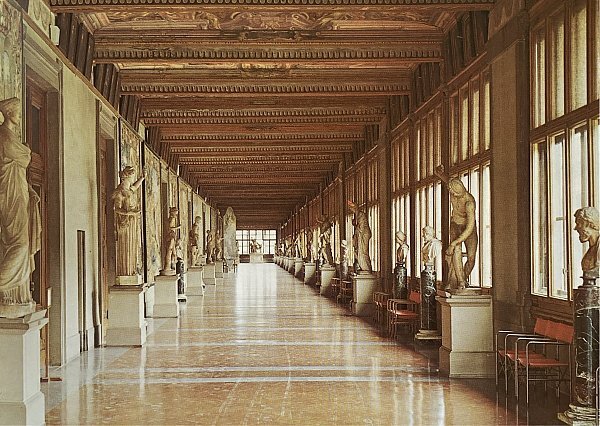Third Corridor
At the beginning, on the right and left, are two statues of hanging Marsyas, copies of Hellenistic originals from the 3rd century B.C. (the one on the right was completed by Donatello at the behest of Cosimo the Elder).
Along the sides of the corridor are placed sculptural works from the classical age. These include a Roman copy from Myron's Discobolus; Leda and the Swan, a Roman copy from a 4th-century B.C.E. Greek original; Dionysus with Young Satyr, a Roman copy from a 4th-century B.C.E. Greek original; again a Leda and the Swan, a copy from Thimotheos; Apollo citaredo, a replica from the Hellenistic-Roman period; and, in the center, Laocoon, a 16th-century copy by Baccio Bandinelli from the Hellenistic original preserved in the Vatican Museums.
Arranged on the left wall are tapestries depicting stories of the Passion of Christ and stories of Jacob, of Florentine manufacture from the late 16th century, and battle scenes of Flemish manufacture.
In the third corridor are the access to the Vasari Corridor, the exit vestibule and, at the end, the exit to the terrace, a former roof garden built in 1583 over the Loggia della Signoria, from which there is a splendid view of the square below.

